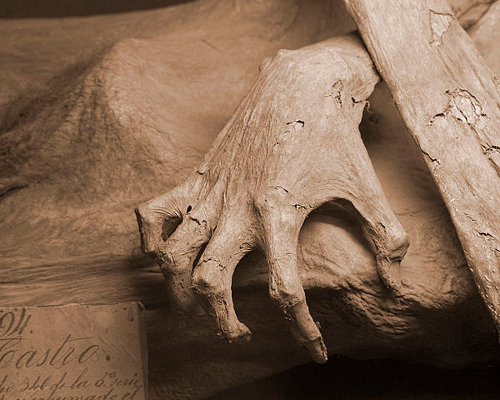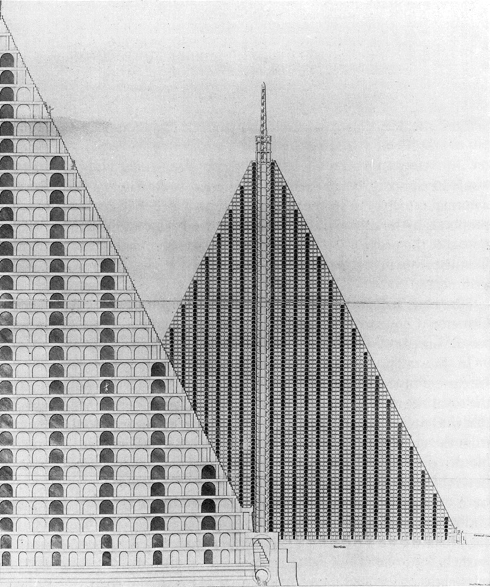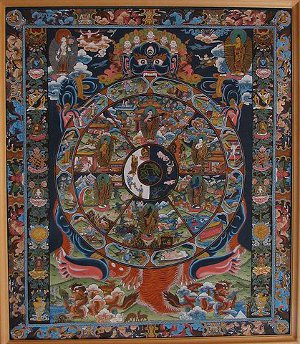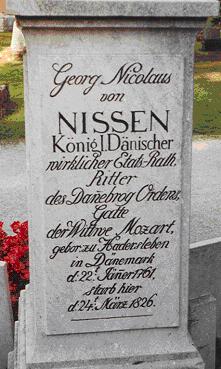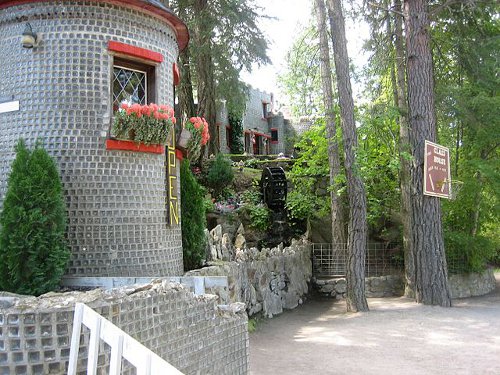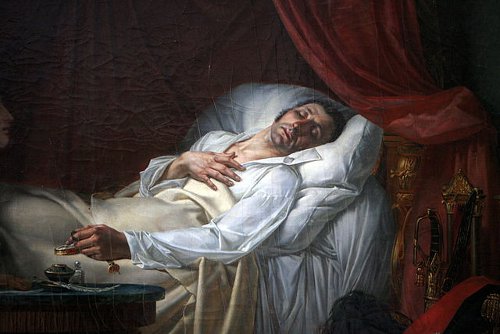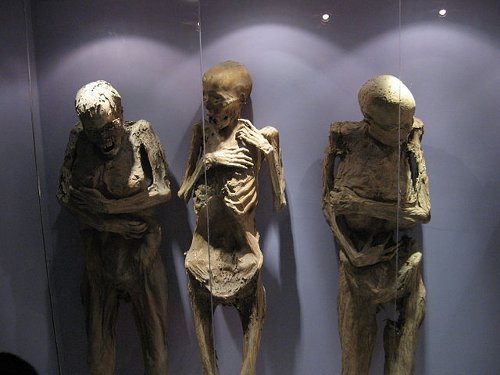
In 1833 a cholera outbreak struck Guanajuato, Mexico, and the dead were buried in a local cemetery. Sixty-three years later, in 1896, city officials levied a fee on burial plots, and poor families had to agree to have their dead relatives disinterred. They were horrified to discover not skeletons but grotesquely preserved bodies, contorted into nightmarish postures and facial expressions. The region’s climate and soil conditions had combined to preserve the corpses.
The city has put 119 of the bodies, some still bearing hair, eyebrows, and folds of skin, on display. Author Tom Weil writes, “In the figures one sees both the living and the departed, death with a human face and humanity with the skull beneath the skin.”
Ray Bradbury, who visited the museum in the 1940s, wrote, “They looked as if they had leaped, snapped upright in their graves, clutched hands over their shriveled bosoms and screamed, jaws wide, tongues out, nostrils flared. And been frozen that way. All of them had open mouths. Theirs was a perpetual screaming.
“The experience so wounded and terrified me, I could hardly wait to flee Mexico. I had nightmares about dying and having to remain in the halls of the dead with those propped and wired bodies. In order to purge my terror, instantly, I wrote ‘The Next in Line.’ One of the few times that an experience yielded results almost on the spot.”
